Having its own country area, the feed for breeding farm animals can be grown on their own. Lucerne in the care of unpretentious, growing rapidly, well suits the ground with nutrients.
Lucerne is a very calorie food for goats, sheep, rabbits, nutria and cows. In addition, the plant can be sowed on a small area in order to attract bees and get excellent honey.
Lucerne: Description
Lucerne has a straight stem with small leaflets, which are located on the stem. The plant is unpretentious, perfectly adapts to weather conditions. The Motherland of Lucerne is Asia, but as a wild plant, this grass can be found in other countries, including Russia.
Lucerne is officially recognized as a medicinal plant and is used in cosmetology, medicine and traditional medicine.
- Lucerne's plant is a popular ciderat that enriches the soil with nutrients, it is a nutrient food for household farm animals. A plant is grown and with a decorative purpose in the empty areas.
- Lucerne can be grown on green animal food, and what will remain - to prepare for the winter. The lucerne hay is very loved by a horse.
- Lucerne is an annual and perennial plant. Stems branched from the very base and before the tips, often the plant is formed in a semi-staple, reaching height to half a meter and even more.
- Power rhizomes, rods penetrating to 10 meters (!) Depth (!), So that the unique ability of the plant accumulates nutrients to the maximum.
- The plant belongs to the family of legumes, so it is not surprising that the roots will be at the roots. They contribute to the recycling of nitrogen air, thereby enriching the soil with nutrients.
- The leaflets are green, cuffs, are located along the entire length of escape from the base to the tip itself. The leaves are grouped by several pieces. Leafs are oblong, on the end with the tooth. If you pay attention to the opposite side of the leaves, you will see short veins.
- The body's length barely reaches 2 cm, they bloom from the sinuses of the leaves at the top of the stem. Inflorescences Gunny or creeps. Each inflorescence will be from 12 to 26 boutons. On the shortened individual flowers "sit" flowers. First, the lower, gradually disclose all the others until the top of the top. Petals can be different coloring: mostly yellow, blue or lilac. There are also rare alfalfa varieties when motley flowers are present on one stem.
- Lucerne blooms quickly - a couple of months after sowing. Blossom long, about a month. It is noteworthy that every brush accounts for up to 10 days of flowering. Every day in the brush blooms from 3 to 5 buds.
- The plant is pollinated only thanks to the bees and other insects. After pollination, brown fruits appear on each flower, in which there are very small seeds of alfalfa yellow or dark brown.
As Lucerne looks like, you can visually see in the photo:
Lucerne varieties
In nature, there are more than a hundred species of alfalfa, about half in nature can be found in Russia. Of these, only units deserve more detailed study, with the goal of growing in areas.
Types of alfalfa:
- Yellow alfalfa or crescent - The most common type of plant. It has a strong, well-developed rhizome. The root siblings appear on an adult plant, reach height from the half-meter to 80 cm. The shoots are covered barely noticeable, rare hairs, there are also shoots without a pile. The leaves of the oval / lanceal form, the maximum length of 2 cm, the width of the leaves reach no more than 0.5 cm. Brushes are dense, are formed closer to the middle of summer. Buds appear on each short flowers, their quantity can be different: minimally 7, as much as possible - up to 40 buds! After pollinating insects, in each boat, the size of no more than 1 cm, the beans ripen. They can be covered with vile, the length of each fetus is about 12 mm.
- Khmelevoid alfalfa - Plant Annual, two-year. It has not such a pronounced rod root, like yellow alfalfa. On one stem, there can be several thin stems reaching the length of the maximum 50 cm. Listed sheets, no more than 15 mm long, the width is even less - barely reaches 10 mm. The leaflets resemble the shape of the rhombus, on the reverse side - the darous. Flowers of yellow and very small (2 mm). The fruits are also small, the same size, outwardly similar to small kidneys covered with a thin pile. Over time, the pork falls out.
- Blue Lucerne or Sowing - reaches a height of up to 80 cm, less often - meter. It has a very strong rhizome. The leaves of oval shape, no more than 2 cm long, very small, up to 10 mm wide maximum. Flowers can be purple or blue, thick brushes. The length of each brush is not more than 3 cm. The beans are very small and rolled, in shape resemble a snail house.
- Hybrid Lucerne - Plant perennial, tall. The length reaches up to 1 m 20 cm. The shoots are branched, the petioles are elongated, thick sleeps in small egg-shaped or oval shape leaves. Brush loose, sizes from 3, to the maximum to 5 cm. Petals are yellow, purple or blue.
You can buy alfalfa in specialized stores or order in the online store. The average cost of the seed package (50 g) is about 60 rubles.
Choosing goods in the store, you need to follow these rules:
- The goods must be certified, without poisonous inclusions and weeds.
- Choose seeds in the factory packaging, with the storage rates.
- The packaging should also contain a seed collection date and place.
If your goal is to sow alfalfa in order to collect harvest for therapeutic purposes, acquire seeds in the market undesirable. It is not known at what time and in what place (roadside forest, polluted places) seeds were collected, as well as in such conditions they were kept.
Pluses of alfalfa
Lucerne, as a perennial, has such advantages:
- Unpretentious in care.
- Do not afraid of drought, because in the first year after landing the roots are able to penetrate into a depth to 2 m, the next year - 1-2 m deeper and in each subsequent - another a few meters. Maximum mark - up to 10 m!
- This culture is not afraid of cold, so seeds can germinate already at +5 degrees!
As a ciderat, culture is characterized by such advantages:
- The root system penetrates deep into the soil, improves metabolism in the soil and moisture level.
- Contributes to the accumulation of moisture in the soil.
- Used for several years after landing.
- Enriches weak, depleted soils.
When sow alfalfa
Lucerne is an unpretentious plant, perfectly adapts to changes in weather conditions. Therefore, alfalfa can be sown in early spring, in summer and autumn, but before the first frosts.
- Often landing alfalfa is carried out early in spring as soon as snow comes. When landing alfalfa in the spring, it is important to comply with the conditions: so that the soil is moistened, then the seeds will be better germinate.
- Duration of sowing varies and depend on climatic conditions in different regions of the country. But mostly alfalfa is customary to sow in April.
- In some cases, it becomes necessary to plant Lucerne in the fall, to the first frosts. Then the seeds are left for the winter, and with the onset of heat (approximately in May) you can expect the first germs. This method allows to obtain natural seed selection or stratification. Finding into the soil, the strongest seeds survive, and the weak - dying. Sprouted seeds are the strongest, they are not afraid of pests and diseases, resistant to temperature fluctuations.
- Summer landing of alfalfa is also possible, since during this period the luminous day is the longest, the earth is good and there is an opportunity to carefully prepare a plot, clearing the weed grass.
Alfalfa compatibility with other cultures
In agriculture, alfalfa with other plants is allowed. For example, with aft culture clover, Timofeevka, oats. The last option is ideal for growing feed crops, because with such a combination you can get dense shoots, and therefore, the abundant harvest of two fodder crops.
If I planned the sowing of alfalfa, combining with another culture, it is necessary to take into account the timing of vegetation, ripening, the growth periods of these crops.
The cultivation of alfalfa is the basic rules
Before embarking culture, it is necessary to prepare a plot and seeds. These rules for preparing the grass alfalfa to the landing will allow you to get a good result:
- selection of site: This culture will be good, if winter cereals, tark cultures, beets, corn or legumes were grown on this site;
- after the cultivation of alfalfa, it is desirable to sow oats, wheat, corn or growing legumes;
- preparation of a landing site: Pleave or throw with the introduction of organic fertilizers at the rate of the square meter of 5 kg, mineral fertilizers + potassium (proportions 2 to 1) - 50 g;
- thoroughly cleanse the plot from all weeds, because the seeds are very small and it will be difficult for them to break through the weed herb;
- plant need fertile soils. If the soil is saline or acidic, it is necessary to pre-crush the soil. If you don't have to wait for anything rich harvest;
- seed preparation: Seed alfalfa has a very dense shell, which, with massive crops, it is more expedient to crush a special machine. As an option - this preliminary preparation is allowed as the peatting of seeds with sand. As a result of mechanical friction on large sand particles, the shell will turn faster, thereby access to moisture. As a result - you can expect a speedy appearance of germs;
- seeds can not be processed, and sow without processing, then you should expect germs in a year;
- for sowing small in size, You can use seeds clumsy in water. Exposures from 10 to 12 hours will be enough for the seeds are ready to land. Features of disembarking seeds: Prepare a groove, richly watering with water, sow seeds, truth the earth. Watering: In the first 7 days after landing, sowing is not worth it, since the soil is well moistened.
How to sow Lucerne: 2 ways
Plant can be sowed in different ways, depending on the size of the site. Consider ways of sowing seeds manually:
- It is necessary to prepare a groove in 15 cm increments (maximum 20 cm), prepared seeds need to be embedded in the soil, deepening by 3 cm. If the area is large, special devices facilitating manual labor are used. This method has found an application in agriculture with the neighborhood of alfalfa with other cultures (for example, oats, barley). If you sow Lucerne Solo, there is a danger that weeds that prevent the development of rapid shoots between the rows.
- Prepare seeds: mix with earth, with dry sawdust or sand in equal proportions. Plug the site, scatter by fan-shaped seed movement manually. After a single passage of the site, you need to change the direction and get along across again / along the site, seating alfalu. So sowed alfalfa in the old days, this method still enjoys popularity.
Sowing norms: 8-14 kg of seeds are used for hectares, taking into account the peculiarities of the soil and aridness in each region. If the climate is dry, seeds can be taken less, and if the summer was rainy - the norm should be increased. If an artificial irrigation is installed on the site, then 15 kg of alfalfa takes the hectare.
Plant care, alfalfa yield
Care for the plant specifically and spend a lot of time there is no need. We learn how to achieve high yields:
- watering - If the summer was arid, before the appearance of the sewers, the soil must be moisturized. If the crust appears, it needs to be dissolved with a roller or split. When the first sprouts will be proceeded, there is no need for more than the soil of the roller;
- lucerne rose to 20 cm height - It's time to water the culture again. Do not pour the soil, as it can negatively affect its growth further;
- after the appearance of buds Lucerne should be crowned, leaving 15 cm and pour again (watering falls on the last week of June). Pour greatly undesirable, since the roots are long in plants and moisture them is enough. Because of this feature, the plant is not afraid of drought;
- as weeds appearThey need to be removed, as it is impossible to get a good harvest. In some cases, if the alfalfa is grown on the animal feed, weed grass is mounted simultaneously with alfaling and give animals immediately or dried;
- how many times can you crush the culture? Everything will depend on the climate in which Lucerne is grown. The first pc - at the beginning of flowering, the last - 30 days before the first frosts;
- third watering - After the bow in September - the soil is not recommended to pour. With excessive irrigation, the plant suspends its growth, becomes weak, landings can be rare;
- seed collection: To collect seeds, you need to leave some plants. After flowering on each trunk, pods with seeds will appear.
A good harvest of alfalfa can be obtained in rush growth - during flowering. But if you focus on the quality of feed, then alfalfa is better to collect during the bootonization period at the initial stage.
Diseases and pests of alfalfa
The plant is not a capricious, but exposed to the attack of pests. This is a meadow, gallicle, bug, scoop, alfalfa weevils.
Fighting pests:
- Isolation of old crops from new at least 1 kg - this method allows you to prevent the reproduction of pests.
- Prevention: Do not sow alfalfa to plots where peas, clover, Vika and other perennial beans were grown.
- Milk at least 5 times per season if the density of insects is high and there is a threat of death of culture. Ship is carried out in a short time, without waiting for a favorable phase so that the larvae do not receive power.
- Irrigation allows you to delay the growth of the weevil, the elephant and the alfalon cow. If the density of insects is high, the need arises in irrigation.
If these methods do not help, chemicals are used. The drug "Person-12" has proven well established. The flow rate of 1 hectare is 300 liters, for spraying from helicopters - no more than 70 liters take to hectare.
Diseases of Culture: Puffy dew, spotty, rust and fading. Of all the possible listed diseases, the plant is most often exposed to malfunctional dew.
Measures of struggle: Spatial isolation, sowing with other cereal crops, spraying twice burgundy liquid 1% (when a disease is detected and 10 days after processing), no later than 2 weeks before the start of cleaning the culture on flour, hay or sieuage.
Growing about the cultivation of alfalfa
Evgenia Vasilyevna: « I decided to robbing rabbits at the cottage, immediately arose a question than feeding. In the district, the husband squirmed all the grass. The neighbor advised to sow Lucerne, plus also said that there would be benefit for the site, as from Siderat. Saws to comply with all the rules, it was almost no need to care, since Lucerne herself rose, especially after the first pouch. I was satisfied, I also turned out to stock in Saint».
Ivan Petrovich: « With a neighbor, they took a sector for two, we have a farm, you need to harvest the hay for the winter. We were advised by the "Hope" grade, said that the high-yielding room. We decided to try, but doubted for a long time, since in the first year of the crops were weak, but after every mortem was getting better and better. Watering properly did not work properly, but helped out heavy rains just in the middle of the summer. On the 3rd year there was so many alfalfa! We did not expect such a crop, 6 centners gathered from hectare. Turned out to be a good harvest, also got the revenue from the sale of seeds, since we don't need so much».
Marina Ivanovna: « All I advise you to try to grow alfalher on the plot - this is a beautiful green carpet, an unpretentious plant, an excellent siderate. And from the seed, I was she who I was lying to do beautiful dishes: I tear the seeds and add them to salads. Beautiful, tasty and very helpful!»

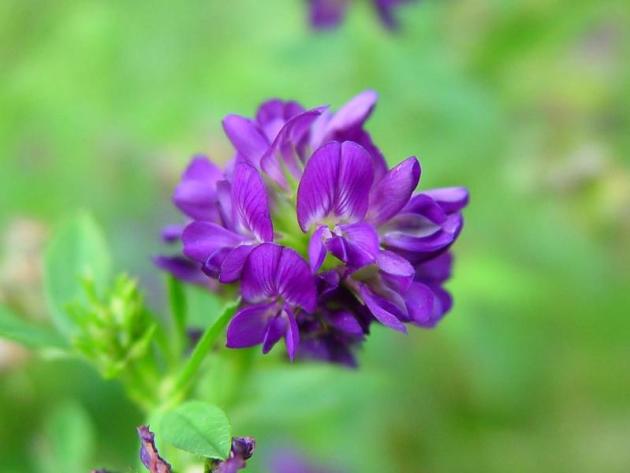
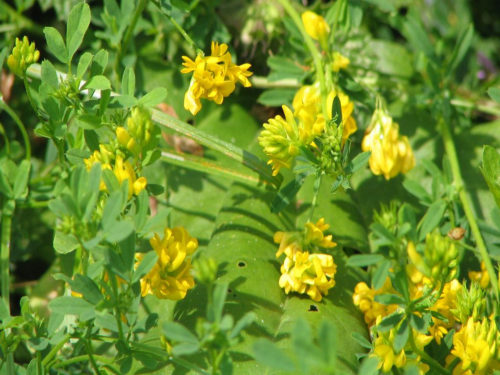
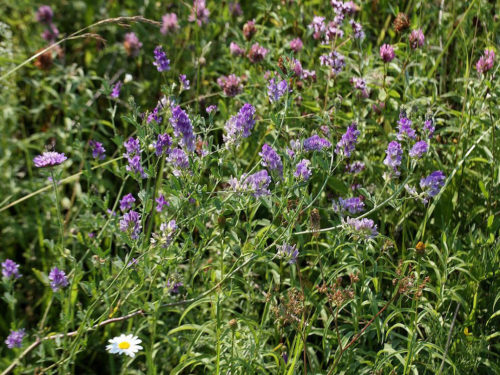
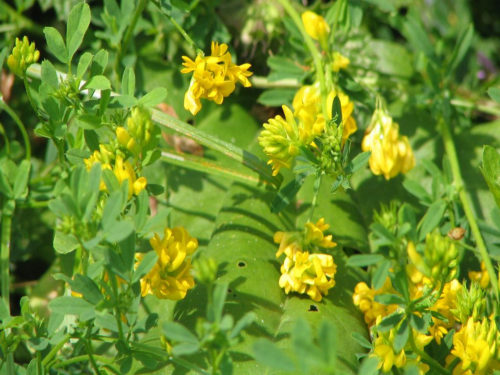
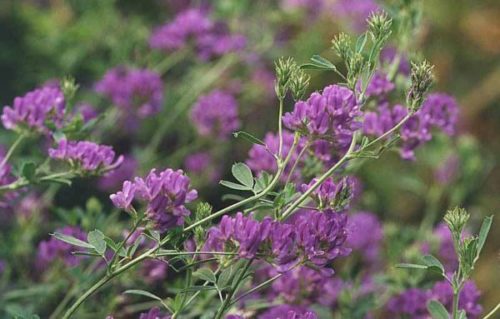
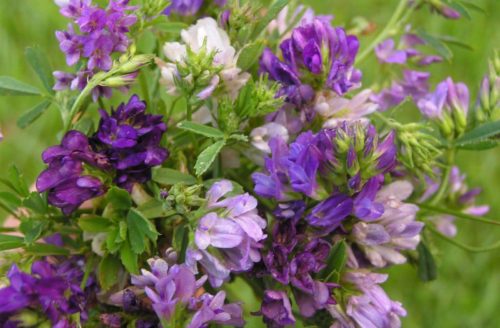
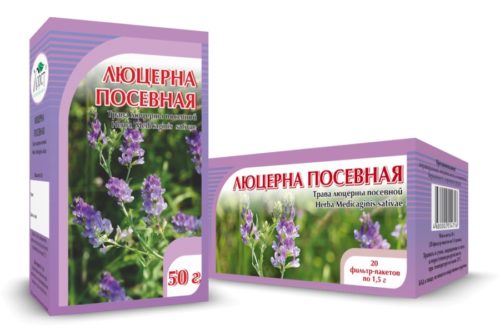
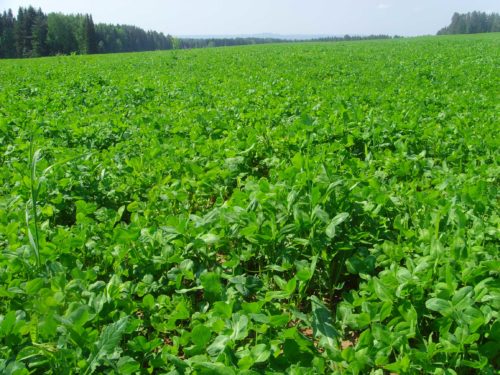
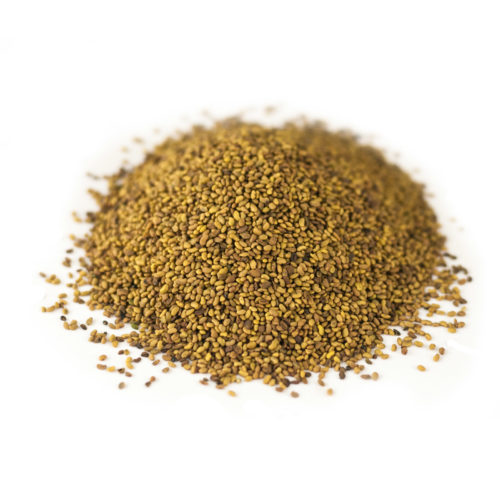
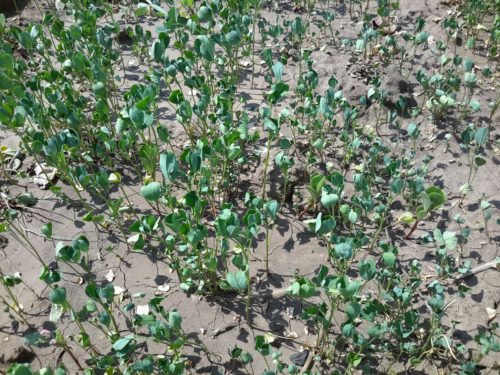
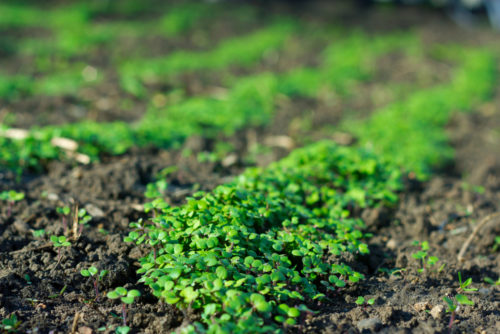
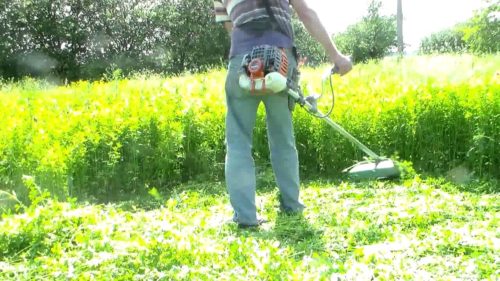
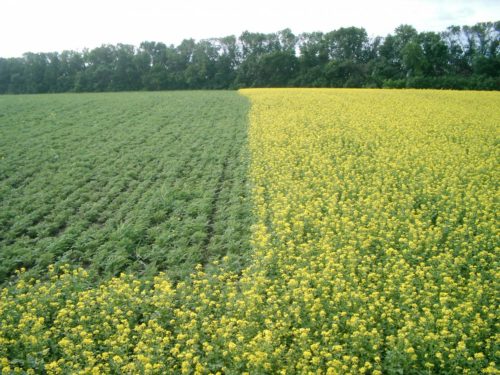
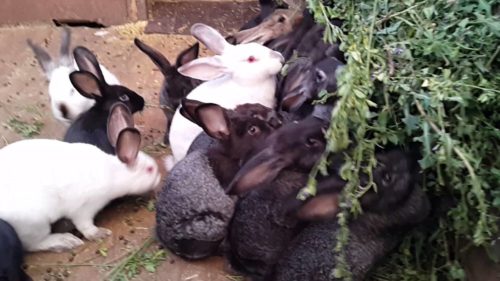












 Start a discussion ...
Start a discussion ...